Exhibits
Coming Soon:
Previous Exhibits
Rambles Through the Wawawai
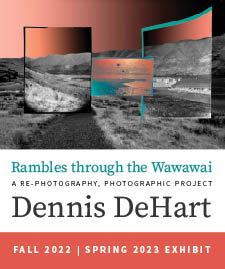
October 20, 2022 to April 12, 2024
A re-photography project, by Dennis DeHart. He selected historical photographs from MASC’s William D. Barkhuff Image Collection and paired them with contemporary images of the Wawawai.
La Causa
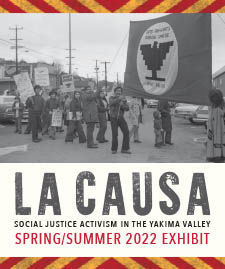
March 29, 2022 to October 7, 2022.
“La Causa” (the cause/struggle) features the work of Seattle photographer Irwin Nash, who documented the plight of Yakima Valley farmworkers during the 1960s and 1970s. Nash’s 9,300 photos are now part of the Irwin Nash Migrant Labor Photographs digital collection.
The exhibit also spotlights the public figures that played important roles in the farmworkers’ movement, including civil rights attorney Michael Fox, United Farm Workers of America co-founders Cesar Chavez and Dolores Huerta, and Yakima Valley organizers Lupe Gamboa, Tomas Villanueva, and the Trevino family.
Grandfather’s Trunk: Spirit of Survival
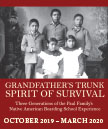
October 28, 2019 to March 20, 2020.
Three generations of the Paul family’s Native American boarding school experiences. Please join us on October 25, 2019 at 4pm for the opening reception featuring exhibit curator Dr. Roberta Paul and visiting scholar Marsha Small.
All Grapes Considered
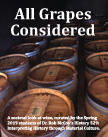
May 1, 2019 through September 26, 2019
This exhibit looks at the role of wine in human society, with displays focusing on cultures, on gender, on class and etiquette, on material culture, and on wine in Washington state. This student-curated exhibit was created through Dr. Robert McCoy’s History 529 class, “History Through Material Culture.”
Win the Day for Crimson and Gray: Celebrating a Century of the Fight Song
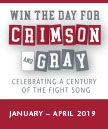
January 11, 2019, through April 25, 2019
On February 20, 1919, two WSU students, Zella Melcher and Phyllis Sayles, debuted their newly proposed campus fight song to virtually unanimous acclaim. As the centennial of “The Fight Song” approaches, the MASC looks at the role it, and similar songs, played on campus, looks at the events leading to the fight song’s creation, and shares the lives of the two women whose music has inspired generations of Cougars.
Read the full WSU press release on the exhibit.
Frauds, Fakes, and Forgeries: Deception in the Archives
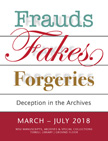
March 21st, 2018, through December 14, 2018
Many libraries and archives have in their collections items that are not what they purport to be. Sometimes with sound reasons, and sometimes unintentionally, these institutions provide a home for documents that are forged, counterfeit, fraudulent, fake, and sometimes honest facsimiles that are mistaken for authentic originals. In MASC collections, problematic items lurk in the rare book and historic newspaper collections, in manuscript and photograph collections.
This exhibit features a forged Abraham Lincoln manuscript, rare books mutilated and altered by a famous book thief who stole a trove of valuable items from MASC, and other examples of problematic documents.
A Century of the Hogarth Press, 1917-2017.
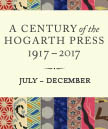
July 25th, 2017 through February 23, 2018
In 1917, Virginia and Leonard Woolf purchased a hand press and set it up in the dining room of Hogarth House, their London home. What began as a hobby became a legitimate publishing concern within a few years. In addition to notable works by writers affiliated with the Bloomsbury Group, the Hogarth Press printed titles devoted to cutting-edge subjects of the time, including politics, psychoanalysis, and foreign literature in translation.
The Hogarth Press also represented new ways of thinking about writers and their work. As literary and social figures of status, the Woolfs used the Hogarth Press as a means to promote ideas and values shared by the Bloomsbury Group, as well as to expand the traditional relationship between authors and their work by giving artists more control in the publishing process.
This exhibit celebrates the 100th anniversary of the founding of the Hogarth Press and features books from MASC’s Library of Leonard and Virginia Woolf and Hogarth Press collections as well as other printed works associated with these collections. In addition, the exhibit includes examples of hand press technology and information about the Bloomsbury Group.
Ambitions & Intellect: Pioneering Women at WSU.
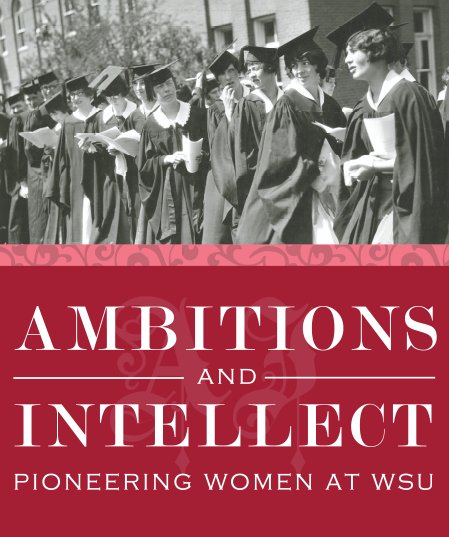
March 3, 2017 through June 27, 2017
Before 1900, women were denied entrance to many Eastern colleges, which were strictly for men only. But in the western states, where there were fewer people, many colleges were coeducational, including Washington Agricultural College and School of Science. The small land-grant college in farm country did something the larger Eastern universities would not do: give women the chance to use their intellect and demonstrate the benefits of higher education for all.
This new exhibit explores the stories of early women contributors at the fledgling college. It is part of this year’s events around Women’s History Month and the Common Reading book “I Am Malala.” The exhibit also highlights women’s determination to get an education and how they made their mark in society afterward.
Read the full WSU press release on the exhibit.
Protest! Students, War, & Racism: WSU Student Activism, 1969-1970.
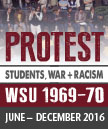
June 22, 2016 through February 17, 2017
It has occasionally been said that the sixties didn’t start until 1970. Certainly through the late 1960s, WSU students appear very ‘square’ – men are always in button down shirts and ties during school; women are in calf-length dresses. The change happens fast – football programs in 1968 depict players with flattops and suit jackets, but by 1972 they have long hair. However, changes were happening underneath at WSU throughout.
This exhibit focuses on campus life and events in late 1968 and in the 1969-1970 school year, culminating in the May 1970 student occupation of “Fort French” and the campus strike which followed. Though far from the first student dissension on campus, it remains the largest and most significant sequence of events, and the struggles of that era still color our campus and our society today.
Read the WSU press release on the exhibit.
Check out the associated Digital Documents Collection.
The Case of the 12-Year-Old Sheriff Killer: Herbert Niccolls and the Washington Justice System
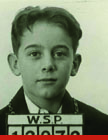
November 18, 2015 through March 25, 2016
In the very early morning hours of August 5, 1931, Asotin County Sheriff John Wormell and his deputies responded to a report of a burglary at an Asotin store. 12-year-old Herbert Niccolls, Jr. was inside, stealing gum and tobacco, and emptying the cash register. As the sheriff interrupted the burglary and ordered him to come out, the boy drew a loaded revolver and pulled the trigger. Sheriff Wormell died instantly.
This exhibit explores aspects of the crime, the trial, Niccolls’s experiences as a juvenile sentenced to life in the Washington State Penitentiary, and his eventual pardon. His case attracted national attention, notably from Father Edward Flanagan of the famous Boys’ Town home in Nebraska. The exhibit features primary source documents about the case from Manuscripts, Archives, and Special Collections, the Washington State Archives, and the Asotin County Museum.
Read the WSU News story on the exhibit.
Read the Exhibit Handout.
Concrete Dreams: Living with the Grand Coulee Dam
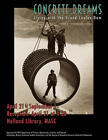
April 21, 2015 through September, 2015
This exhibit examines both the benefits and costs of the construction of the Grand Coulee Dam, which remains the largest energy producer in the United States. While it provided thousands of jobs during the Great Depression, aided the American World War II effort, and irrigated vast areas of central and western Washington, it also held hidden costs for those who lived near the construction site: the notorious escapades of dam workers after hours in the town of Grand Coulee; the flooding of the Native American town of Inchelium; and the failed first farming experiments of the Columbia Basin Project. The exhibit was curated by students in associate history professor Rob McCoy’s “Interpreting History through Material Culture” class.
Read the WSU News story on the exhibit.
Ephemera: Yesterday’s Trash, Today’s Archive
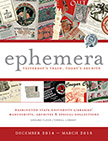
December 2014 through April 2015
Ephemera are materials designed to be used just a few times at best and then discarded, and not to be kept permanently. Programs, ticket stubs, posters, menus, packaging – these are all materials intended to be used, and not designed as historical documents. Despite that intent, these materials can provide colorful and valuable insights into how a society shares itself, and what it finds important, in ways that historical documents frequently can’t. However, archives can’t collect everything, and find themselves walking a fuzzy line in trying to determine what ephemera they should keep. This exhibit shares collected ephemera from the MASC’s collections as well as sharing ephemeral materials from today and from our region’s past that we decided not to save.
Read the WSU News story on the exhibit.
Over Here: World War I and the Palouse
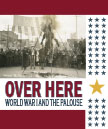
July 28, 2014 through October 31, 2014
The public face of World War I is the soldiers who sacrificed their lives in the fields of France, However, while they were fighting, the people of Eastern Washington were finding ways to support their soldiers on the front and serve the country and support the War in many ways. This exhibit looks at the War’s effects on those left behind, including WSC and Pullman’s responses, the letters exchanged between soldiers and those here, the Spanish influenza, and the incredible women of the Spokane Red Cross Canteen.
Read the WSU News story on the exhibit.
Clipped History: The WPA and the Stories Behind the Pacific Northwest Newspaper Collection
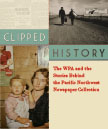
March 27, 2014 through July 18, 2014
The exhibit details how local WPA workers in the 1930s clipped more than 400,000 articles from Pacific Northwest newspapers dating back to 1890. Today, the clippings are being digitized as part of MASC’s Kimble Northwest History Database.
Read the WSU News story on the exhibit.
Outrageous Hypotheses: Selections from the MASC
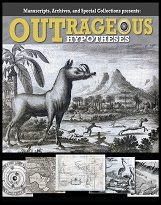
August 12, 2013 through March, 2014
Inspired by the WSU Common Reading program‘s 2013-2014 selection, Kathryn Schulz’s Being Wrong: Adventures in the Margin of Error… This exhibit uses items from the MASC’s collections to examine how human knowledge has changed through history by looking at some of our misconceptions and how individuals and society have dealt with them. Topics include geocentrism, flat earthers, non-existent animals, the Northwest Passage, the Gravity Plan for northwest irrigation, Harlan Bretz’ Missoula Flood theories, and the origins of “Couging.” Displayed items include books, maps, photographs, and articles ranging in date from 1500 through to 1985.
The National Park Service Nez Perce Historic Images Collection: A Dynamic Photographic Legacy of the Nimiipuu

April 11, 2013 – July 31, 2013
The exhibit features photos preserved by the park service and digitally hosted by WSU Libraries. Some artifacts on loan from the Nez Perce National Historical Park are also part of the display. This exhibit is curated by the the graduate students of Robert McCoy’s HIST 529: Interpreting History through Material Culture, where they learn to present and interpret historical artifacts for a public audience.
Pioneering Businesswoman: The Journey of Lucy Stevenson
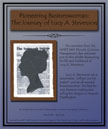
March 7, 2013 – April 2, 2013
Pennsylvanian Lucy Stevenson invented herself as a dressmaker and milliner. She decided to leave the east coast and pioneered across the United States plains to Issaquah, Washington where she married a civil war soldier and made her mark in the working class town. Lucy became a successful entrepreneur when she decided to rent out a small shop and began selling her custom made dresses and hats to local enthusiasts of her work. This exhibited is curated by the students in AMDT 460.
Read a short WSU News article on the exhibit.
Persuasion and Propaganda: War Posters from the MASC
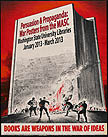
January 25 – March 4, 2013.
Prior to the advent of broadcast radio and television, governments looked to other media to communicate information to their citizens. One of the most eye-catching formats is the propaganda poster, the use of which peaked during World War I and remained pervasive through World War II. The U.S. government alone produced an estimated 20,000,000 copies of more than 2,500 distinct posters during the first World War. Through these “weapons on the wall,” governments persuaded their citizens to participate in a variety of patriotic functions, from purchasing war bonds to conserving scarce resources. These posters also strengthened public support for the wars by providing “message control” about the government’s allies and enemies.
The WSC library first collected these during World War I, and in 1937 they became part of the College’s new War Library, which included books, pamphlets, posters, and other ephemera. The War Collection would be supplemented by additional donations in subsequent decades. A digital collection of these, created for the exhibit, can be found at https://content.libraries.wsu.edu/cdm/landingpage/collection/propaganda.
Vineland: Shaping Paradise (The Lewiston-Clarkston Improvement Company Records, 1890-1920)
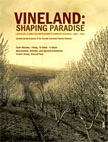
April 4th 2012 – December 2012.
The history of the American West is littered with boom towns, failed utopias, and ghost towns. Many of these places tell a variation on the story of Vineland. From seventeenth-century “cities of gold” to twenty-first century suburban subdivisions, successive waves of newcomers have reached toward what they believed was the region’s promise of natural and financial bounty. The powerful image of the West as a garden often stood at the center of these fables of abundance, beauty, and health. Yet in the arid West, the existing landscape rarely satisfied such high hopes. Undeterred, where the land did not match their dreams, westerners often sought to make places“like the Snake River Valley”conform to their imaginations.
By the end of the nineteenth century western boosters had perfected this west-as-garden image, just as they began to transform the ecology of the arid West to match their expectations. Boxes of Sun Maid Raisins, crates of California oranges, and railroad company pamphlets beckoned to a rising class of consumers and health seekers in this era of rapid urbanization and industrialization. In the Northwest too, investors and local business people armed themselves with the modern tools of this transformation, including capital, federal subsidies for railroads and irrigation projects, new forms of mass communication and advertisement, and a comprehensive planning philosophy for urban spaces. In this context, the planners of the Lewiston and Clarkston Land Company turned their attention to creating and selling this common western image of paradise in Vineland.
This student-designed exhibit, drawn from the collections of the Manuscripts, Archives and Special Collections, highlights the booster pamphlets, plans, and professional photographs (by influential northwest photographer Asahel Curtis) that attest to the power of the garden and of the imagination in constructing the modern West in eastern Washington. But as with any advertising, the booster images only tell a part of the story and may obscure even more. Rarely do these pictures and plans, for instance, suggest the social consequences or contests that accompany any attempt to create one version of paradise. This exhibit invites visitors to think about the images, realities, and legacies of a century-and-a-half of garden dreams in the West.
Signature History: Celebrity Manuscripts from the Paul Philemon Kies Collection
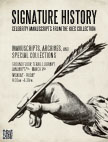
January 17, 2012 – March 16, 2012
These selections from the Kies autograph collection are original manuscripts, primarily letters, of prominent American and European writers, monarchs, statesmen, military figures, and performers. Most of the items are autograph letters (written in the hand of the sender), some with transcriptions and translations.
A companion digital collection with images of the items in this exhibit is available.
Underpinnings
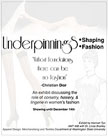
December 1st, 2011 – December 14th, 2011
A history of undergarments and their effects on fashion, illustrated through items drawn from the historic costume collection in WSU’s Department of Apparel, Merchandising, Design and Textiles. Curated by Hannah Tyo, a WSU Apparel Design student.
Cabbages to Campus: Tales From A Dozen Decades
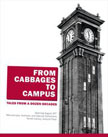
August 19th, 2011 – November 28th, 2011
A look at WSU’s history from 1890 to present. More…
Comic Society: Reflections
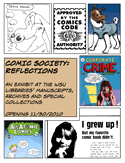
December 9th, 2010- August 12th, 2011
Discover Something Big at the WSU Libraries
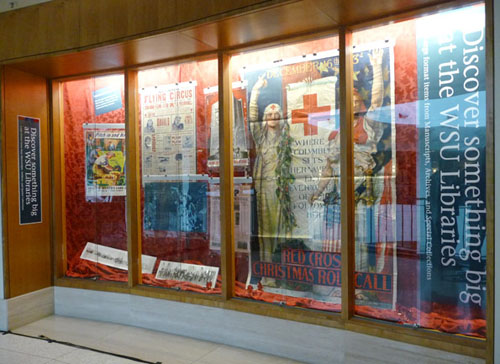
This exhibit displayed several oversized items held in MASC. It was located on the 1st floor of the Terrell Library atrium in November and December, 2010.
Baskets, Bonnets, and Pincushions: Interpreting the Life and Work of Mary Walker
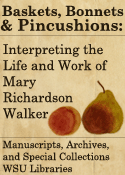
March 5th, 2010- October 4th, 2010
Win the Victory: The Early Days of Football at Washington State
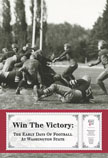
September 4th, 2009 – February 16th, 2010
This exhibit shares stories from the early days of WSU’s football history, from its first game in 1894 up to the 1931 Rose Bowl. More…
The Compleat Angler
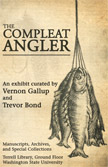
Preserving the Past for the Future: Conservation of Book and Paper Materials
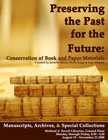
August 19, 2008 – November 21, 2008
Learning Each Other’s Language: L.V. Mcwhorter and the Columbia Plateau Tribes
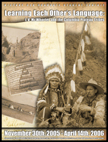
November 30, 2005 – April 14, 2006.
This exhibit seeks to integrate disparate parts of the Lucullus Virgil McWhorter Collections held in the Museum of Anthropology and Manuscripts, Archives, and Special Collections at Washington State University. The exhibit has been curated by the students enrolled in History 529, Interpreting History through Material Culture.
Chasing A Dream: Explorations in Embroidered Wearable Art
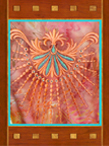 My interest in wearable art, particularly embroidery, was piqued after studying Elsa Schiaparelli, Italian fashion designer and entrepreneur. My designs are a culmination of exploring surface embellishment techniques in the exciting world of embroidery and beadwork.
My interest in wearable art, particularly embroidery, was piqued after studying Elsa Schiaparelli, Italian fashion designer and entrepreneur. My designs are a culmination of exploring surface embellishment techniques in the exciting world of embroidery and beadwork.
Heritage and History of the Plateau Peoples: Featured Collections
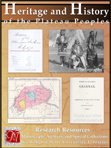 The seven collections featured here (Avery, Brown, McWhorter papers & photographs, Webster, Winans, early maps) represent just a small sample of the resources available in MASC. They consist primarily of manuscripts (letters, Indian agency records, and other written documents), photographs, and maps; some of the images have also been digitized and are available online.
The seven collections featured here (Avery, Brown, McWhorter papers & photographs, Webster, Winans, early maps) represent just a small sample of the resources available in MASC. They consist primarily of manuscripts (letters, Indian agency records, and other written documents), photographs, and maps; some of the images have also been digitized and are available online.
“A Lot of Chaos, A Little Control”-MA Thesis by Mary Pedersen
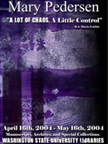
April 16, 2004 – May 16, 2004.
While I am not a scientist and have only recently become aware of the concept of chaos theory, I find that it very nicely explains my attraction to organic textures and seemingly chaotic patterns found in nature. I am intrigued by patterns and textures found in marble, tree barks, plant and tree branching systems, dragonfly wings, lightning and cracks that form in landscape and in rocks.
World Civilization Image Repository
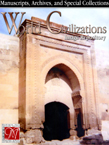 The World Civilizations Image Repository (WCIR), consists of a series of image databases drawn from donated personal faculty collections and images located in Manuscripts, Archives, and Special Collections (MASC) at the WSU libraries.
The World Civilizations Image Repository (WCIR), consists of a series of image databases drawn from donated personal faculty collections and images located in Manuscripts, Archives, and Special Collections (MASC) at the WSU libraries.
Paris Inspired Fashion 2003 – Honors Thesis by Lisa Appel
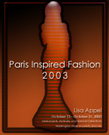
October 3, 2003 – Octopber 31, 2003
In studying fashion design, it is very important to understand how a designer’s inspiration is manifested in the final garment. By understanding how a designer does this, and by understanding what I find inspirational, I can then utilize their methods of incorporating inspirational elements into my final designs.
Washington Territory 1853-1889
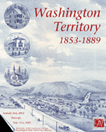
January 2, 2003 – May 21, 2003.
The year 2003 marks the sesquicentennial of the establishment of Washington Territory. The 36-year territorial period was documented in official government reports and publications, business and personal correspondence, printed works (produced by companies, organizations and institutions),drawings, photographs, diaries, and artifacts.
Pullman: Early Downtown Businesses
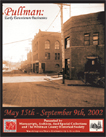
May 15, 2002 – September 9, 2002.
Drawing on the collections of WCHS, MASC, and the Neill Public Library, this exhibit provides a glimpse of a small group of Pullman’s important early businesses including merchants, hotels, drug stores, and banks.
Challenging The Advice Of “Experts”…Fashionable Plus-Size Apparel
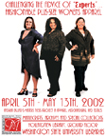
March 5, 2002 – May 15, 2002.
The purpose of this project is to investigate the accuracy of “how to dress” advice directed toward plus size women in popular literature. Examples of the advice given to plus size women include: they shouldn’t wear large prints or pants with straight legs; do not tuck in shirttails; cover up the hips and derriere with a blazer; and wear elastic waist skirts.
First Women in Graduate Education at Washington State University
 The first women to receive graduate degrees from the State College of Washington did so just five and six years after the college instituted its graduate school, and in so doing played an important role in the establishment of a rich tradition of women in graduate education that continues at Washington State University to the present day. More…
The first women to receive graduate degrees from the State College of Washington did so just five and six years after the college instituted its graduate school, and in so doing played an important role in the establishment of a rich tradition of women in graduate education that continues at Washington State University to the present day. More…
A Century of Graduate Education

October 1, 2001 – January 1, 2002.
Celebrating the centennial of graduate education. It was not until 1902 that the first official master’s degree at WSC was awarded to William Hurford Lawrence. In 1929, LaVerne Almon Barnes completed the first PhD at Washington State College slightly ahead of Frederick James Stevenson, who also filed in 1929.
Early Modern Printing 1480-1707
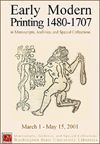
March 1, 2001 – May 15, 2001.
Manuscripts, Archives, and Special Collections has a surprisingly large but generally unknown collection of early printed books. Most of the books selected for this exhibit were acquired prior to 1958.
Presidential Politics 1824-1992

October 30, 2000 – December 29, 2000.
An exhibit of American political memorabilia from 1824 to 1992 is no exception, as collected by former WSU faculty member Frank Mullen.
Urban Spaces, Urban Places: The Architectural Visions of Kenneth W. Brooks
 Born in Cedarvale, Kansas, in 1917, Ken Brooks took lifelong interest in Spokane’s urban prospects and problems (and would not relinquish this preoccupation until his death in 1996). Throughout this period he was a tireless public advocate of architecture and urban design as an essential means to improve the quality of life in Spokane.
Born in Cedarvale, Kansas, in 1917, Ken Brooks took lifelong interest in Spokane’s urban prospects and problems (and would not relinquish this preoccupation until his death in 1996). Throughout this period he was a tireless public advocate of architecture and urban design as an essential means to improve the quality of life in Spokane.
Celebrating Book Arts in the West

October 18, 1999 – November 28, 1999.
Audubon’s Birds
 Audubon, John James (1780-1851), American naturalist, is said to have been born on the 5th of May 1780 in Louisiana, his father being a French naval officer and his mother a Spanish creole. This exhibit shared prints from an 1856 printing of Audubon’s Birds of America.
Audubon, John James (1780-1851), American naturalist, is said to have been born on the 5th of May 1780 in Louisiana, his father being a French naval officer and his mother a Spanish creole. This exhibit shared prints from an 1856 printing of Audubon’s Birds of America.
Selected Bindings of Virginia Woolf
 This online exhibit of Selected Bindings by Virginia Woolf highlights one of the unique features of the personal Library of Leonard and Virginia Woolf located in Manuscripts, Archives, and Special Collections at Washington State University. More…
This online exhibit of Selected Bindings by Virginia Woolf highlights one of the unique features of the personal Library of Leonard and Virginia Woolf located in Manuscripts, Archives, and Special Collections at Washington State University. More…
WSU Buildings
 Campus architecture before ca. 1905 largely follows common designs used in 19th Century civic buildings. These early buildings were chiefly of brick masonry construction, with designs that reflect their purposes as classroom and laboratory buildings.
Campus architecture before ca. 1905 largely follows common designs used in 19th Century civic buildings. These early buildings were chiefly of brick masonry construction, with designs that reflect their purposes as classroom and laboratory buildings.
An Exhibit on the life and work of George Mathis

January 22, 1999 – April 30, 1999.
The George Mathis collection of photographs, artwork, and historical ephemera, was donated to WSU Libraries in October 1991 by Jean and Carol Mathis, the wife and daughter, respectively, of the late George Mathis.
From the Westin Archives

October 1, 1998 – December 31, 1998.
The records of the Westin Hotels and Resorts were transferred to the Washington State University Libraries in 1997 by the Company. The records had previously been managed as the Westin Archives, a project of J. William Keithan, the Westin Vice-president who founded the corporate archives in 1975 and who was instrumental in arranging the transfer to the University Libraries.